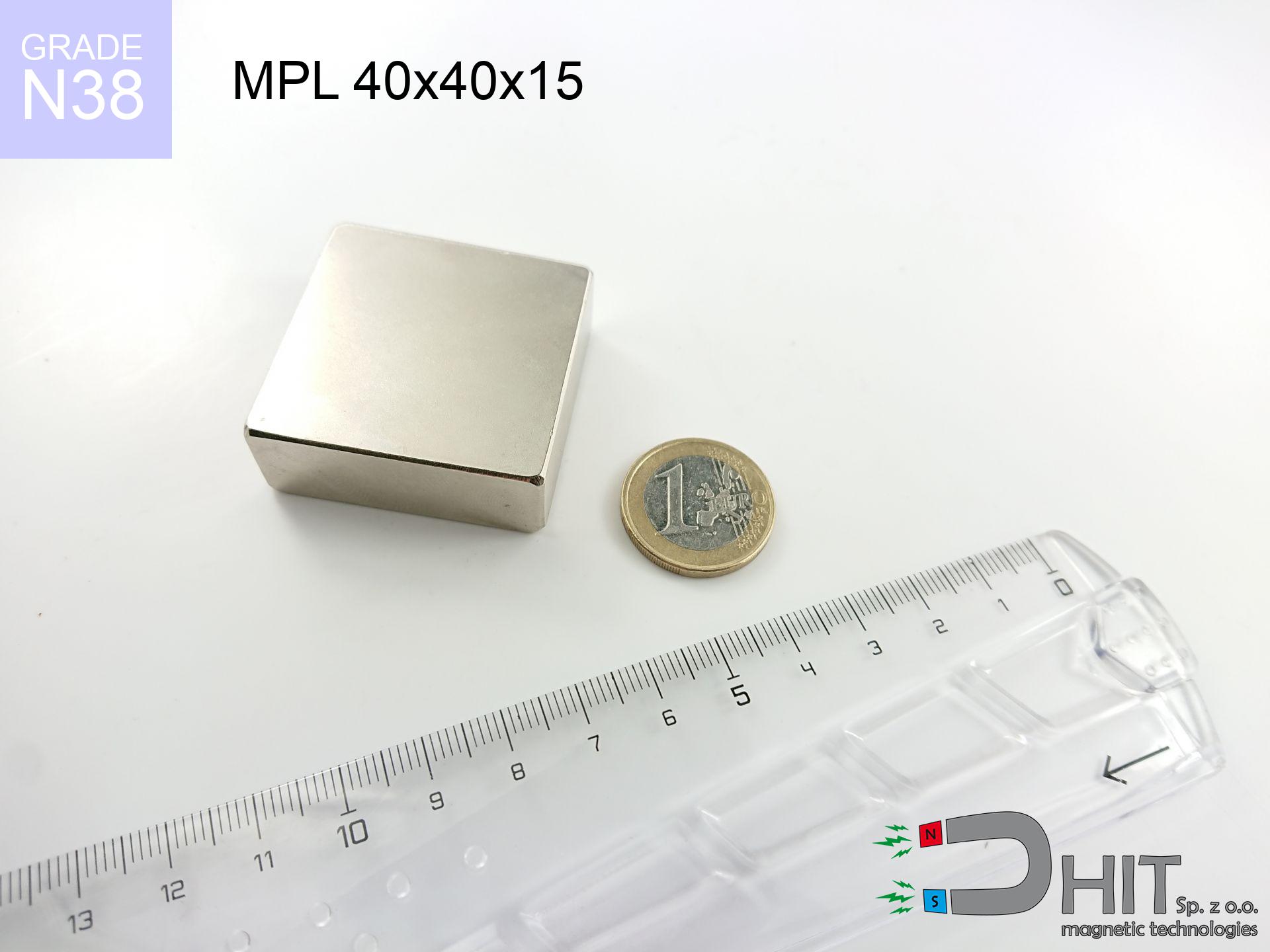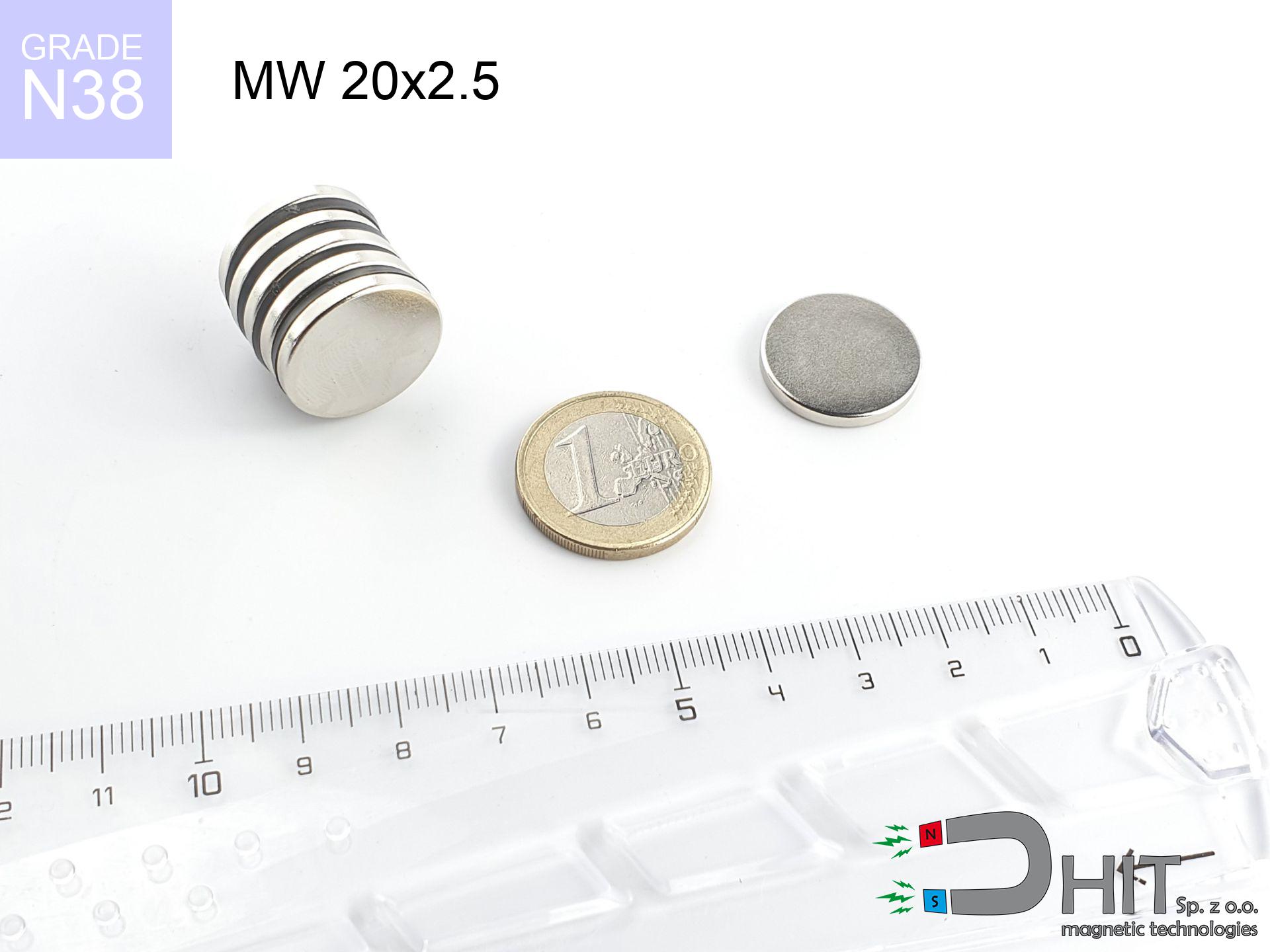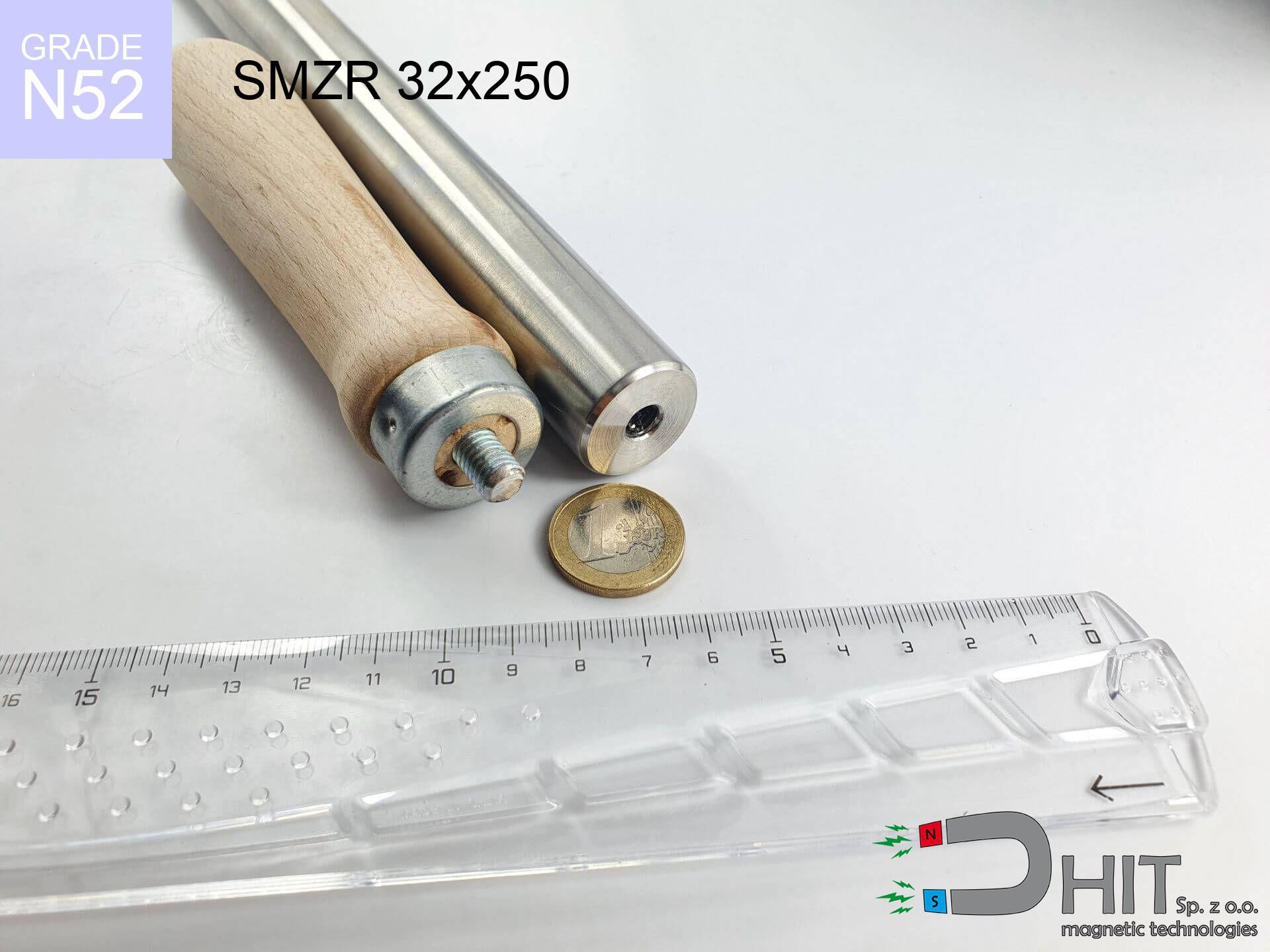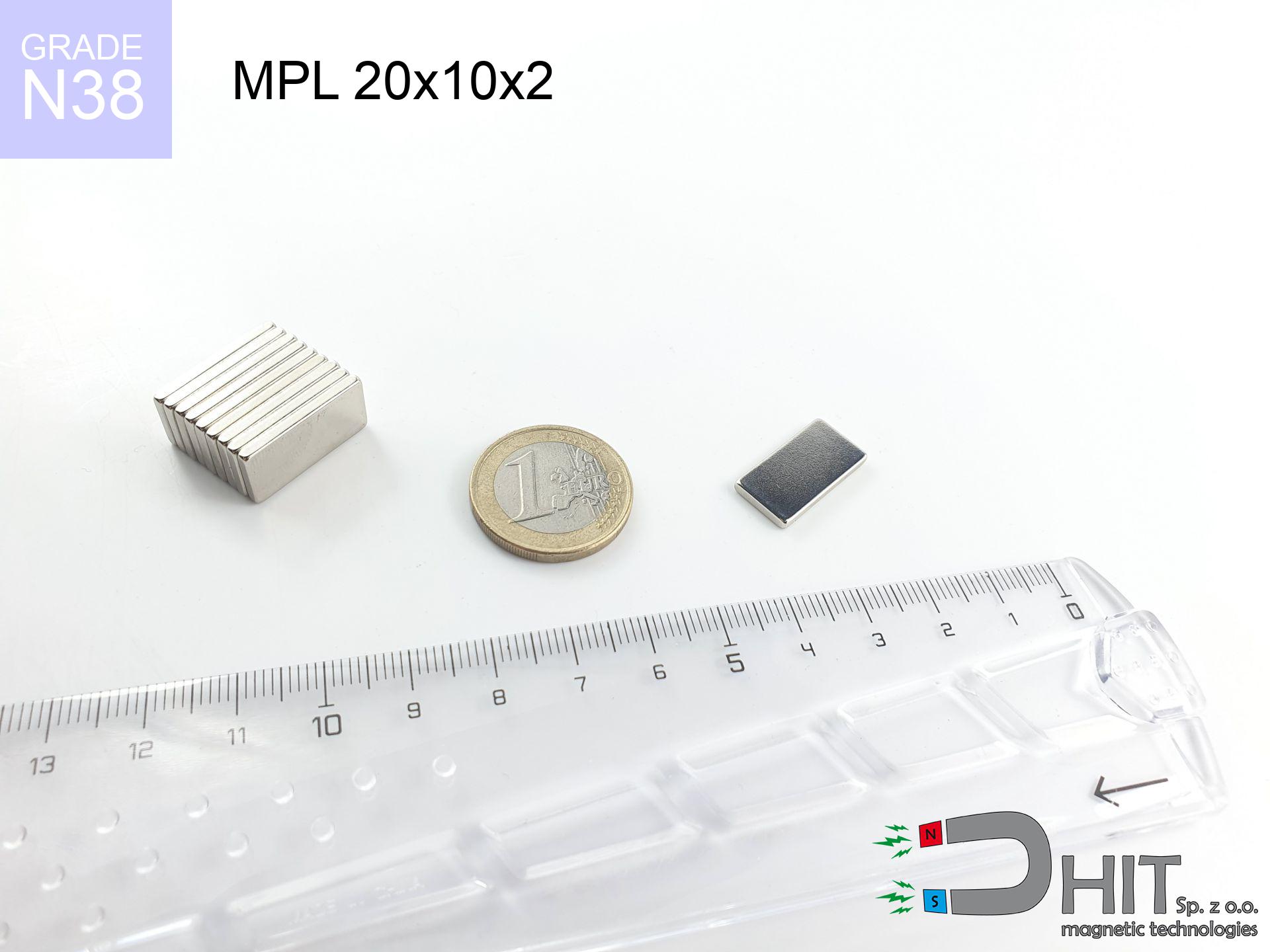SM 32x475 [2xM8] / N42 - magnetic roller
magnetic separator
catalog number 130377
GTIN: 5906301813255
diameter Ø
32
mm [±0,1 mm]
height
475
mm [±0,1 mm]
max. temperature
≤ 80
°C
catalog number 130377
GTIN: 5906301813255
diameter Ø
32 mm [±0,1 mm]
height
475 mm [±0,1 mm]
max. temperature
≤ 80 °C
1414.50 ZŁ gross price (including VAT) / pcs +
1150.00 ZŁ net price + 23% VAT / pcs
bulk discounts:
need more quantity?Don't know what to buy?
Call us tel: +48 888 99 98 98 or write via form on the contact page. You can check the power as well as the shape of neodymium magnets in our magnetic mass calculator force calculator
Orders placed by 2:00 PM will be shipped on the same business day.
Specification: magnetic separator 32x475 [2xM8] / N42
Magnetic properties of the material N42
Physical properties of sintered neodymium magnets Nd2Fe14B
Choose recommended products
Advantages and disadvantages of neodymium magnets NdFeB.
In addition to immense power, neodymium magnets have the following advantages:
- They do not lose strength over time - after about 10 years, their strength decreases by only ~1% (theoretically),
- They are exceptionally resistant to demagnetization caused by an external magnetic field,
- By applying a shiny coating of nickel, gold, or silver, the element gains an aesthetic appearance,
- They have very high magnetic induction on the surface of the magnet,
- Magnetic neodymium magnets are characterized by very high magnetic induction on the surface of the magnet and can operate (depending on the shape) even at temperatures of 230°C or higher...
- The ability for precise shaping and customization to specific needs – neodymium magnets can be produced in many variants of shapes and sizes, which amplifies their universality in usage.
- Key role in advanced technologically fields – are utilized in hard drives, electric drive mechanisms, medical equipment and other modern machines.
Disadvantages of neodymium magnets:
- They can break when subjected to a strong impact. If the magnets are exposed to impacts, we recommend using magnets in a metal holder. The steel housing in the form of a holder protects the magnet from impacts, and at the same time increases its overall strength,
- High temperatures can reduce the power of neodymium magnets. Typically, after heating above 80°C, most of them experience a permanent loss in strength (although it is dependent on the form and size). To prevent this, we offer special magnets marked with the symbol [AH], which are highly resistant to high temperatures. They can operate even at temperatures up to 230°C, making them an ideal solution for applications requiring high-temperature operation,
- Due to their susceptibility to corrosion in a humid environment, we recommend using waterproof magnets made of rubber, plastic, or other moisture-resistant materials when using them outdoors,
- The use of a cover or a magnetic holder is recommended due to the limited possibilities of manufacturing threads or complex shapes in the magnet
- Possible danger associated with microscopic parts of magnets pose a threat, in case of ingestion, which is crucial in the aspect of protecting young children. It's also worth noting that small elements of these magnets are able to hinder the diagnostic process when they are in the body.
Notes with Neodymium Magnets
Neodymium magnets are extremely delicate, they easily crack as well as can become damaged.
Neodymium magnetic are delicate and will shatter if allowed to collide with each other, even from a distance of a few centimeters. Despite being made of metal and coated with a shiny nickel plating, they are not as hard as steel. In the case of a collision between two magnets, there can be a scattering of small sharp metal fragments in different directions. Protecting your eyes is essential.
Neodymium magnets are over 10 times more powerful than ferrite magnets (the ones in speakers), and their strength can surprise you.
Familiarize yourself with our information to properly handle these magnets and avoid significant injuries to your body and prevent disruption to the magnets.
Do not bring neodymium magnets close to GPS and smartphones.
Intense magnetic fields generated by neodymium magnets interfere with compasses and magnetometers used in navigation, as well as internal compasses of smartphones and GPS devices.
Neodymium magnets should not be near people with pacemakers.
Neodymium magnets generate strong magnetic fields. As a result, they interfere with the operation of a pacemaker. This happens because such devices have a function to deactivate them in a magnetic field.
Neodymium magnets can demagnetize at high temperatures.
Although magnets have shown to retain their effectiveness up to 80°C or 175°F, this temperature may vary depending on the type of material, shape, and intended use of the magnet.
Dust and powder from neodymium magnets are flammable.
Avoid drilling or mechanical processing of neodymium magnets. If the magnet is crushed into fine powder or dust, it becomes highly flammable.
Avoid contact with neodymium magnets if you have a nickel allergy.
Studies clearly indicate a small percentage of people who suffer from metal allergies such as nickel. An allergic reaction often manifests as skin redness and rash. If you have a nickel allergy, try wearing gloves or avoid direct contact with nickel-plated neodymium magnets.
Keep neodymium magnets away from TV, wallet, and computer HDD.
Strong magnetic fields emitted by neodymium magnets can damage magnetic storage media such as floppy disks, credit cards, magnetic ID cards, cassette tapes, video tapes, or other devices. In addition, they can damage televisions, VCRs, computer monitors, and CRT displays. You should especially avoid placing neodymium magnets near electronic devices.
Neodymium magnets should not be around youngest children.
Neodymium magnets are not toys. Be cautious and make sure no child plays with them. In the case of swallowing multiple magnets simultaneously, they can attract to each other through the intestinal walls. In the worst case scenario, this can lead to death.
Neodymium Magnets can attract to each other, pinch the skin, and cause significant injuries.
In the case of placing a finger in the path of a neodymium magnet, in that situation, a cut or even a fracture may occur.
In order for you to know how strong neodymium magnets are and why they are so dangerous, see the article - Dangerous strong neodymium magnets.

![SM 32x475 [2xM8] / N42 - magnetic roller SM 32x475 [2xM8] / N42 - magnetic roller](https://cdn3.dhit.pl/graphics/products/sm-32x475-2xm8-jot.jpg)





